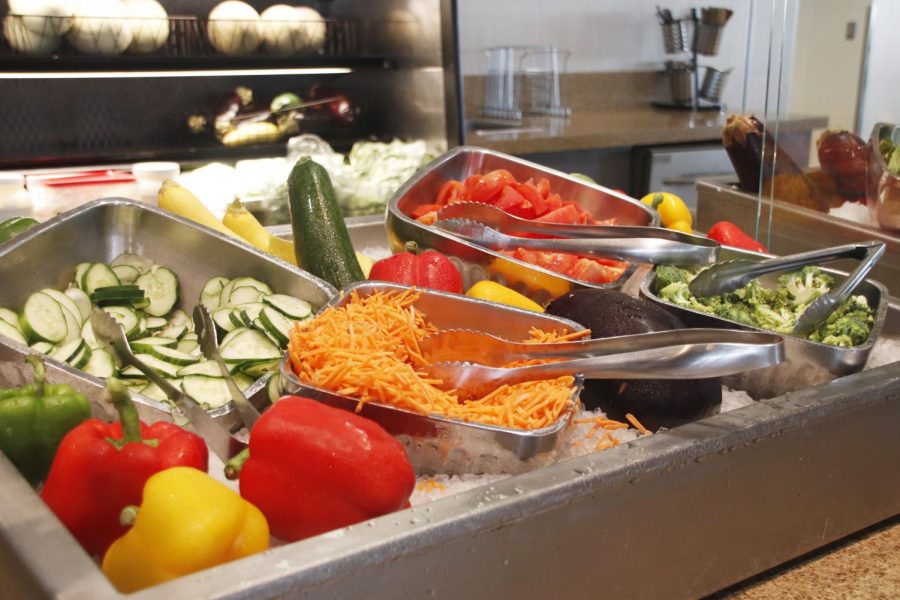What happens to the leftover cafeteria food?
File Photo
The university Dining Services attempts to reduce food waste through the food management process. Globally, a large amount of food from household restaurants and cafeterias goes to waste because of improper food waste management.
September 18, 2018
The disposal of waste is a large environmental problem. The world produces enough food for the entire human population, but a large amount goes to waste. According to the World Wildlife Fund, “Worldwide, humans waste one of every three food calories produced. These wasted calories are enough to feed three billion people, 10 times the population of the United States.” It is, therefore, important to control and manage food waste efficiently.
According to a study done by the University of Minnesota, “Roughly 40 percent of the United States food supply, 1,500 calories per person per day, is never eaten, which is among the highest rates of food loss globally.” This leads to the loss of a large amount of energy used during the process of production. The food waste comes in a large amount from households, restaurants and cafeterias.
There are various ways to reduce food waste all over the world. According to the Environmental Protection Agency, nutritious, safe and untouched food can be donated to food banks, and the leftovers can be composted instead of throwing them away. The EPA suggests various ways to sustainably manage food such as reducing the source of surplus food, feeding hungry people and animals, and making compost and landfills.
The proper disposal of food waste is a challenge all over the world, and this applies to the university as well. Robin Parker, director of marketing and strategic initiatives in the auxiliary services, gave insights to the way food waste is disposed at the university.
“Starting with what we purchase and continuing through to how we dispose of waste, we work hard every day to reduce our environmental footprint,” said Parker. “Through the food management process, we are already making a great start to reduce food waste. In addition to our current recycling efforts, we are also evaluating the feasibility of a food donation program as well as the potential effectiveness of a pre-consumer composting program.”
Parker explained how the chefs at the Dining Services repurpose the leftovers whenever possible according to the standards by the Food and Drug Administration.
“Last year, our team has implemented a partnership with LeanPath,” said Parker. “LeanPath helps us track and weigh waste pre-consumer to support reducing waste such as trimmings, etc. Post-consumer, we are currently weighing waste from the dish return line. During the semester, we are looking into ways to showcase this information with our food committee and ask their insights on how to promote this to the students. “
While various efforts are being made by the university, students should also be well aware of sustainable ways to manage food waste and help reduce pollution in the country. Donating unused food and composting at an individual level could be a great way to avoid problems created by the waste.










